Two gold medallions of the Apostolo Zeno Collection in the British Museum*
Abstract:
The paper aims to reconstruct the purchase, sale and current
location of some gold medallions acquired by the Venetian
erudite and collector Apostolo Zeno. In particular, there were
four specimens that Zeno sold to cardinal Alessandro Albani,
which later became part of the Vatican collection. Two of these
medallions were later bought by the Duke of Blacas and then
passed into the collection of the British Museum, where they are
currently kept.
Keywords:
Apostolo Zeno (http://viaf.org/viaf/14779941;
http://d-nb.info/gnd/116980257);
Gold Medallions; Cardinal
Alessandro Albani (https://viaf.org/viaf/34465260/;
http://d-nb.info/gnd/119212064);
Louis, Duke of Blacas (http://viaf.org/viaf/41979936;
http://d-nb.info/gnd/1050400712);
British Museum.
Zusammenfassung: Ziel dieses Beitrags ist es, den Verbleib einiger Goldmedaillons aus dem Besitz des venezianischen Gelehrten und Sammlers Apostolo Zeno zu rekonstruieren: Vier Exemplare, die Zeno an den Kardinal Alessandro Albani verkauft hatte, gelangten schließlich in die Vatikanischen Museen. Zwei dieser Medaillons wurden später von Louis, Duc de Blacas d’Aulps erworben und befinden sich heute im Münzkabinett des British Museum.
Schlagwörter: Apostolo Zeno; Gold-Medaillons; Kardinal Alessandro Albani; Louis, Duc de Blacas d’Aulps; British Museum.On 12 September 1718 the
Venetian erudite Apostolo Zeno (1668–1750) arrived in Vienna, at
the court of the Emperor Charles VI of Habsburg (1711–1740)
where he remained, more or less permanently, until
1731, and where he devoted himself, from 1722 with increasing
assiduity and constancy, to the collection and the study of
ancient coins. As a result, an extraordinary collection of over
ten thousand pieces was achieved thanks to
the considerable wealth provided by his
service, as poet laureate, at the imperial court and to
the network of relationships he built and
maintained throughout his life.
Especially during the
first years in Vienna, Zeno had the opportunity to purchase some
gold medallions that soon, however, he decided to sell in order
to realise a significant profit, as confirmed by a passage in
the »Diario Zeniano«[1],
dated on 31 July 1745: »Una volta sola so d’aver venduto
medaglie[2]:
e furono quattro medaglioni d’oro, che diedi all’Albani per 170
zecchini: a me costavano 25 ongari«[3].
Albani has to be identified with the Catholic cardinal
Alessandro Albani (1692–1779), born in Urbino, collector of
antiquities and art patron.
Zeno
came into possession of the four specimens in different times
and circumstances. One of these medallions,
minted during the reign of Gallienus (253–268 A.D.), was
purchased between August and September 1723, when he was in
Prague for the coronation of Charles VI as King of Bohemia, and
he had the opportunity to acquire the precious specimen, as
testified by what he wrote to his half-brother Andrea Cornaro on
14 September 1723: »I giorni passati comperai qui un altro
bel medaglione d’oro di peso di quattro ungheri, con la
testa di Gallieno da una parte, e dall’altra con un Ercole con
clava, e pelle di lione, e la leggenda Virtus Gallieni Augusti«[4].
Zeno’s mention to »un altro bel medaglione d’oro«
is indirectly alluding to the first medallion, struck by Valens
(364–378 A.D.), that the Count Lippe gave to him two years
earlier in Vienna[5].
The description of the
Gallienus specimen allows to easily identify the medallion: on
the obverse the head of the emperor laureate to the right and
the legend IMP GALLIENVS AVG COS V; while on the reverse
Hercules standing to the left with the lion’s skin, a branch in
the right hand, a club in the left and legend VIRT GALLIENI AVG[6].
As
already mentioned, four medallions were sold to cardinal Albani,
but unfortunately we do not know the circumstances that
led to the acquisition of the other two specimens.
However, their description is provided
by Zeno himself in a letter of 13 March 1728, addressed to the
Somascan father Gianfrancesco Baldini (1677–1764) in Rome[7].
At this date Apostolo already intended to sell his medallions
with the aim of obtaining the maximum
profit. He was quite reluctant to sell portions of his
numismatic collection, although minimal, and
the statement »Una volta sola so d’aver venduto medaglie«,
leads to this conclusion, and suggests that it was a rather
exceptional fact. Perhaps he considered the
collection of gold medallions too expensive or too risky,
fearing of running into counterfeits[8],
and he came to the decision, certainly thoughtful, to sell the
four specimens in his possession with the aim, certainly not
secondary, to achieve a lucrative profit.
The following is the letter
Zeno wrote to Baldini: »A pié di questa (lettera)
troverà la descrizione dei quattro medaglioni d’oro ch’io
tengo: dei quali però non sarò mai per privarmi per meno di 160.
ungheri. Non se ne faccia maraviglia del prezzo, poiché
pel solo Valente ho potuto averne 70. e gli ho ricusati, non
volendone meno di cento«[9].
In addition to the already mentioned
specimens of Valens and Gallienus, Zeno reported the description
of the other two medallions:
I. IMP GALLIENVS AVG COS. V. Gallieni caput galeatam.
VIRT GALLIENI AVG.
Hercules nudus, dextrorsum stans, dextra oleae ramum, sinistra
clavam erectam, leoninis spoliis in laevum brachium rejectis.
Pesa quattro ungheri [»weighs four
ungheri«].
II.
FL VAL CONSTANTIVS NOB CAES. Caput Constantinii Chlori
radiatum.
PRINCIPI IVVENTVTIS.
Constantius laureatus, habituque militari ornatus, sinistrorsum
stans, d. spiculum transversum gestat, s. globum. In imo
PROM. Pesa quattro ungheri [»weighs
four ungheri«][10].
III.
D N VALENS MAX. AVGVSTVS. Caput Valentis cum diademate
ex lapillis & margaritis, cum paludamento ad pectus gemmata
fibula revincto, dextram expansam altollens, s. victoriam tenet,
quae s. ramum gerit, d. vero laureolam porrigit Imperatori.
D N VALENS VICTOR SEMPER
AVG. Imperator nimbo ornatus, cum paludamento ad pectus, a
fronte stans, super currum a sex equis tractum, dextra expansa &
elata, s. globum tenet. Hinc & inde volitant duae victoriae
lauream illi porrigentes. In ima parte plures, ut videntur,
monetarum acervi, & litterae R M. Pesa dieci ungheri e mezzo in
circa [»weighs about ten ungheri and
half«].
Sopra questo medaglione il P.
Paoli ha stampata un’erudita dissertazione
[regarding this medallion, P. Paoli wrote
an erudite dissertation][11].
IV. ALEΞANΔΡΟΥ.
Victoria dextrorsum stans, d.
lauream, s. sceptrum: pro pedibus, vas utrinque ansatum.
Pesa cinque ungheri [»weighs
five ungheri«][12].
The
letter to Baldini provides a last important information:
»Tutti i suddetti medaglioni d’oro purissimo
sono d’indubitata antichità, e d’intera conservazione. In quello
di Gallieno v’è un buco sopra la testa; e questo è il solo
difetto che v’abbia«[13].
The exact date of the
sale of the medallions to Albani is unknown but in 1738 the
collection of the medallions of the Cardinal, including the four
specimens sold by Zeno, passed to the Vatican collection[14]
and the transaction, therefore, must have occurred before that
year.
Between 1739 and 1744 a
work was published, in two volumes, edited by Rodolfo Venuti
(1705–1763)[15]:
»Antiqua numismata maximi moduli Aurea, Argentea, Aerea,
ex Museo Alexandri S.R.E. Card. Albani in Vaticanam Bibliothecam
a Clemente XII Pont Opt Max translata (…)«, in
which he described many of the medallions of the
former Albani collection, and among them, the four specimens
which had belonged to Zeno. In the first volume,
published in 1739, the double stater of Alexander the Great
is indicated (see note 12, and fig. 1) with a weight
of 16.767 g[16],
lighter than the one reported by Zeno (»cinque ungheri«,
about 17.25 g, see note 3). The other three specimens were
included in the second volume, published in 1744; following the
chronological order it mentioned the medallion of Gallienus (fig.
3), with a weight of 13.91 g[17],
almost the same cited by Zeno (»quattro ungheri«,
about 13.8
g). It is however important to
highlight a detail: its reproduction does not present the hole
over the head (see above). It could be an oversight or, more
likely, the engraver’s intention to show the intact medallion[18].
The last two specimens, related to Costantius Chlorus (fig.
6)
and Valens (fig. 2), are respectively of a weight of
12.64 g (Zeno indicated »quattro ungheri«,
13.8 g)[19]
and 36.25 g, almost the same mentioned
by Zeno (»dieci ungheri e mezzo in circa«)[20].
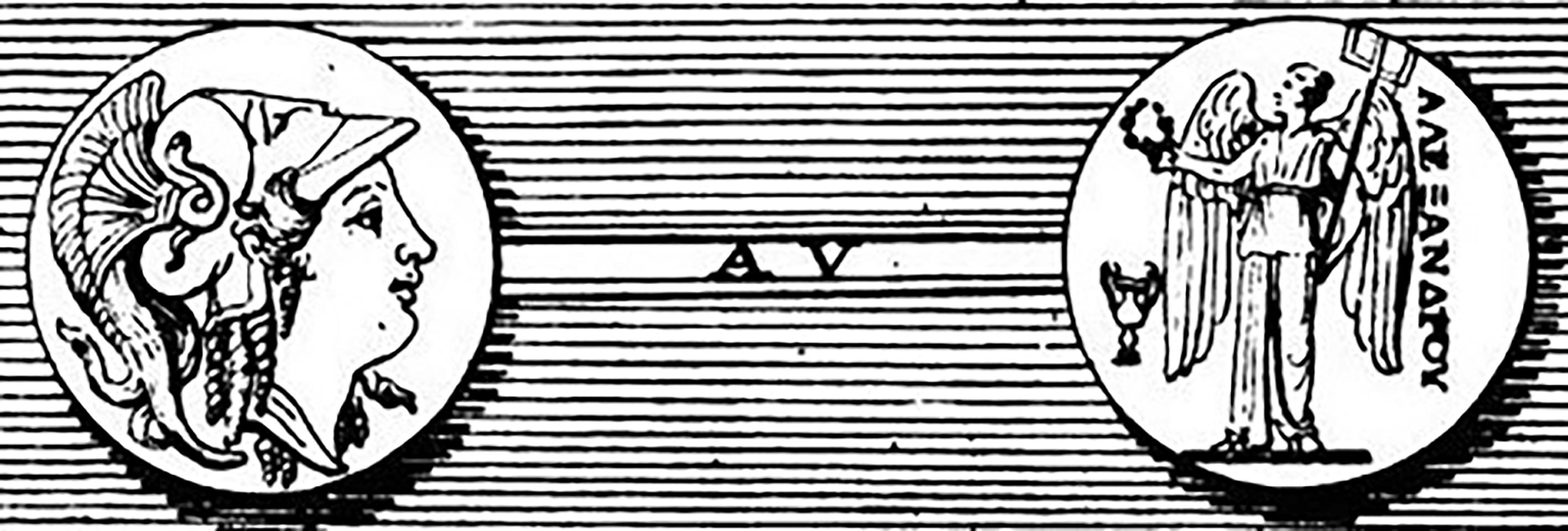
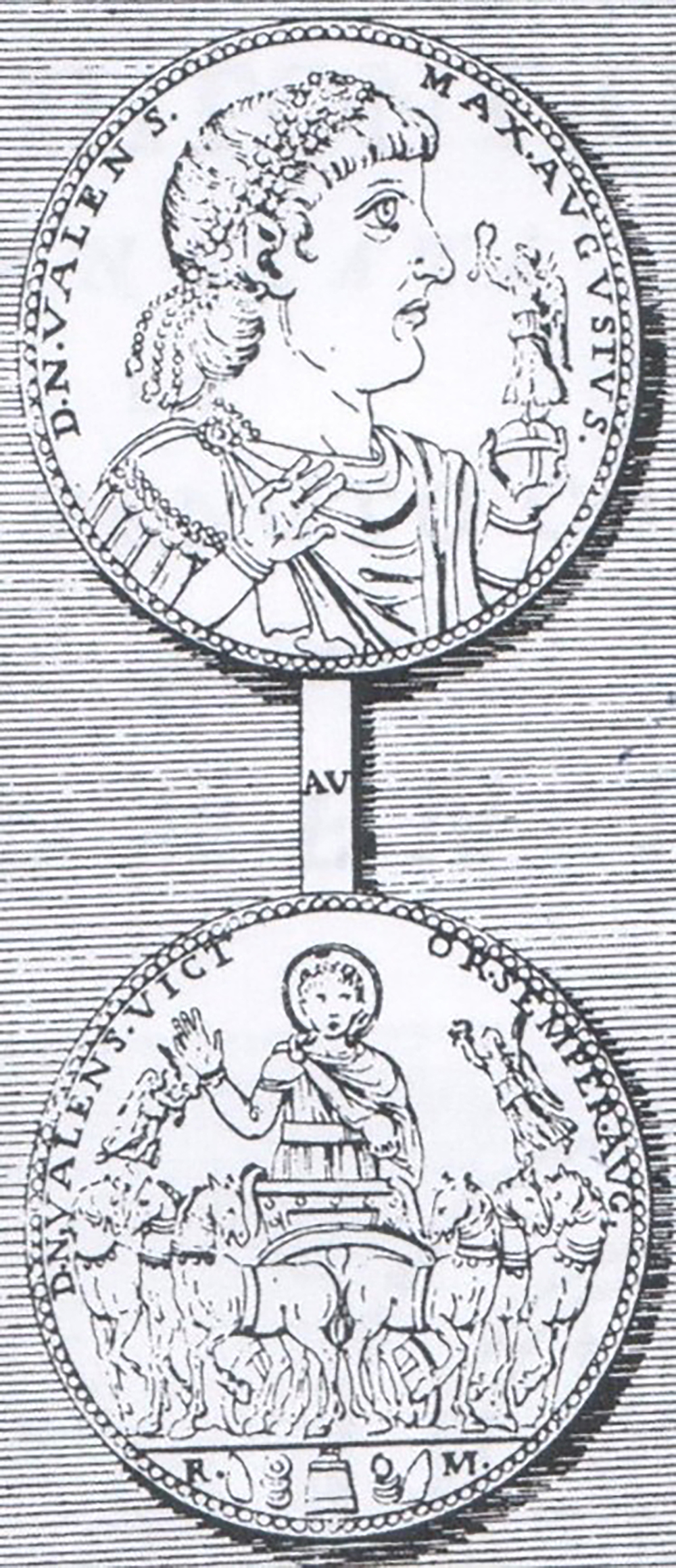
The medallions were
displaced in 1798, when, under the terms of the treaty of
Tolentino, stipulated the previous year, the specimens from the
Albani collection, as well as many other precious coins, were
taken from the Vatican collection by the delegates
of the French Republic, and brought to Paris[21].
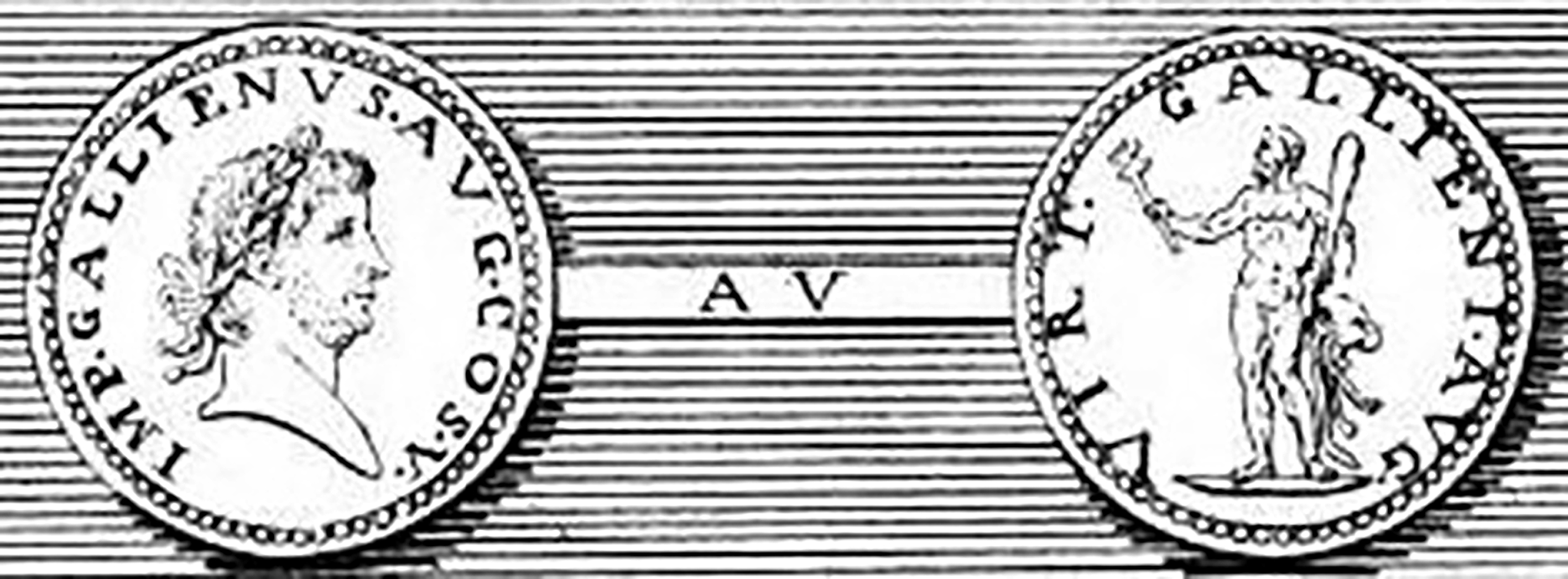
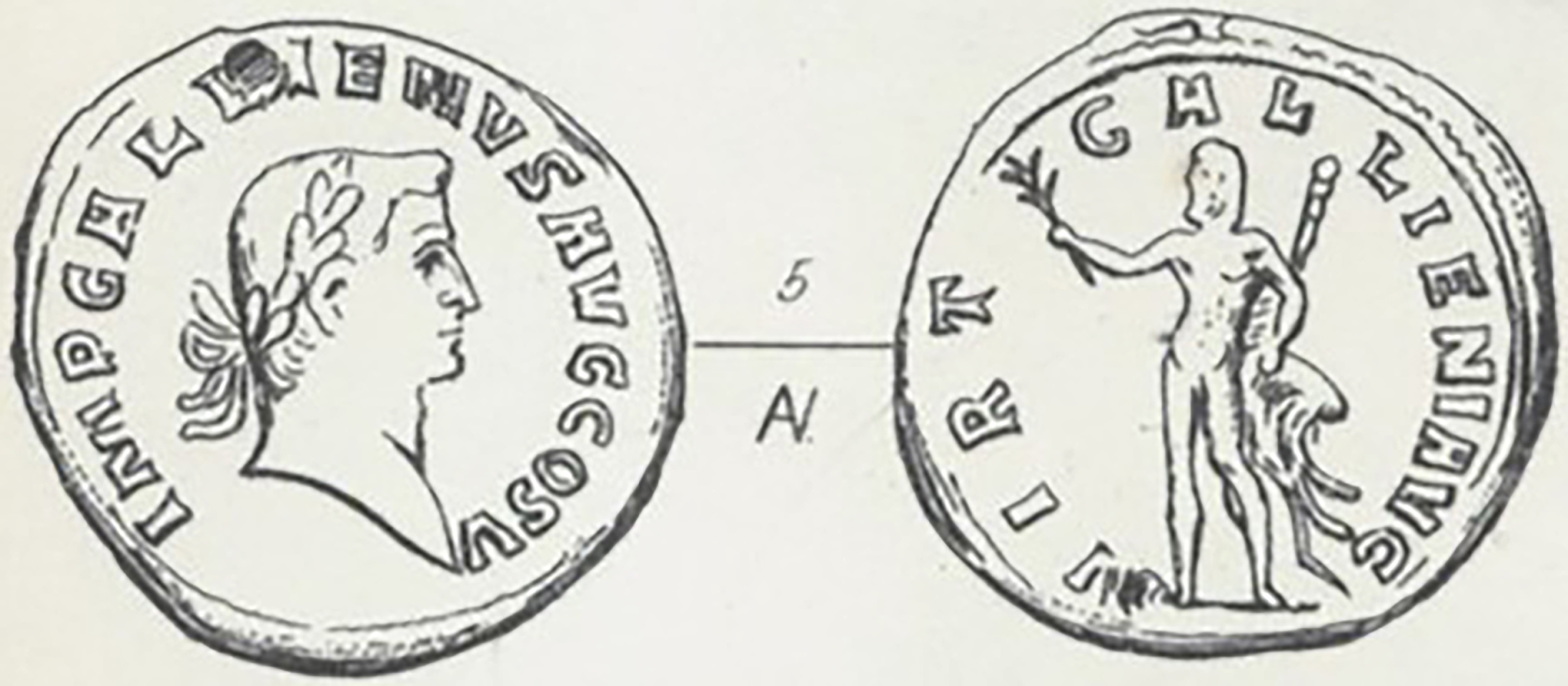
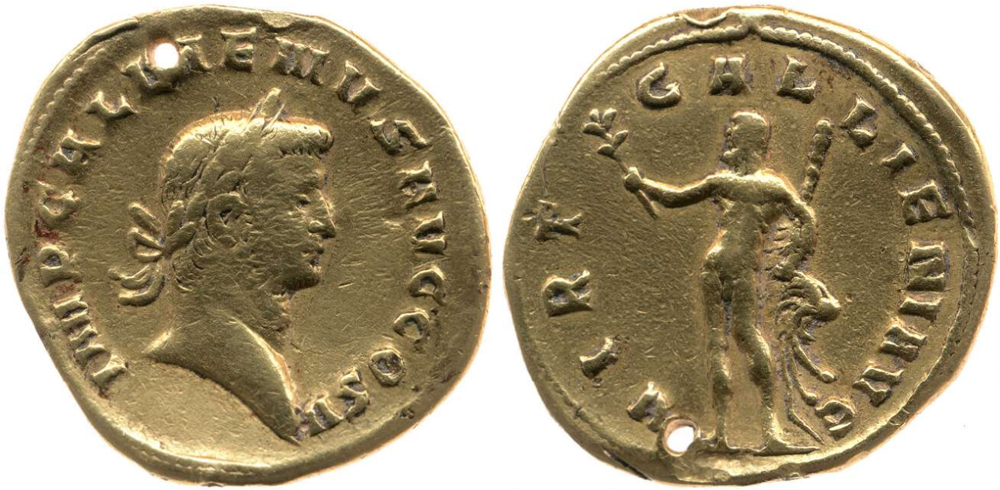
We can affirm with
reasonable certainty that two of the four medallions belonged to
Apostolo Zeno are now kept in the British Museum, both coming
from the Louis de Blacas d’Aulps collection, which was entirely
purchased by the Museum in 1867. The first medallion is
the Gallienus one (Museum
number 1867,0101.821, with a
weight of 13.980 g, fig. 5), declared to be owned, in the
information entry of the Museum, by the Duke of Blacas[22].
The aristocrat is mentioned as the owner of the specimen also in
the fourth volume of the first edition of Henry Cohen’s work, »Description
historique des monnaies frappées sous l’Empire Romain«,
published in 1860[23].
In 1868 Frederic W. Madden (1839–1904) writing for the
Numismatic Chronicle about the gold coins of the Blacas
Collection acquired the previous year by the British Museum,
reported exactly this
Gallienus medallion (fig. 4)[24].
The Duke’s name appears also in the Francesco Gnecchi’s work on
the Roman medallions, published in 1912, in which the author
reports the Gallienus medallion and, among the known pieces, a
specimen preserved in London with the following words: »già
Blacas anticamente Vaticano, m. 28, gr. 14.000«[25].
It is obviously the medallion kept in
the British Museum with the identification number mentioned
above, and it is more than plausible to
conclude that it is the same specimen belonged to cardinal
Albani, and before to Apostolo Zeno, even more so if we consider
the provenance of the Vatican collection.
Lastly, to corroborate the hypothesis there is also
another important clue represented by the hole placed over the
head of Gallienus, a detail also reported by Zeno in his letter
to Baldini (»un buco sopra la
testa«, see above).
Thanks to the
publication of Gnecchi we can trace also the location of the
Costantius Chlorus medallion. In the
concerning form the author wrote: »Londra (già Blacas
anticamente Vat. Alb.) m. 25, g. 12,975«[26].
Therefore, this specimen followed the same path of the previous
one to reach the collection of the British Museum, where it is
still kept (Museum
number 1867,0101.879, with a weight of
12.830 g, fig. 7)[27].

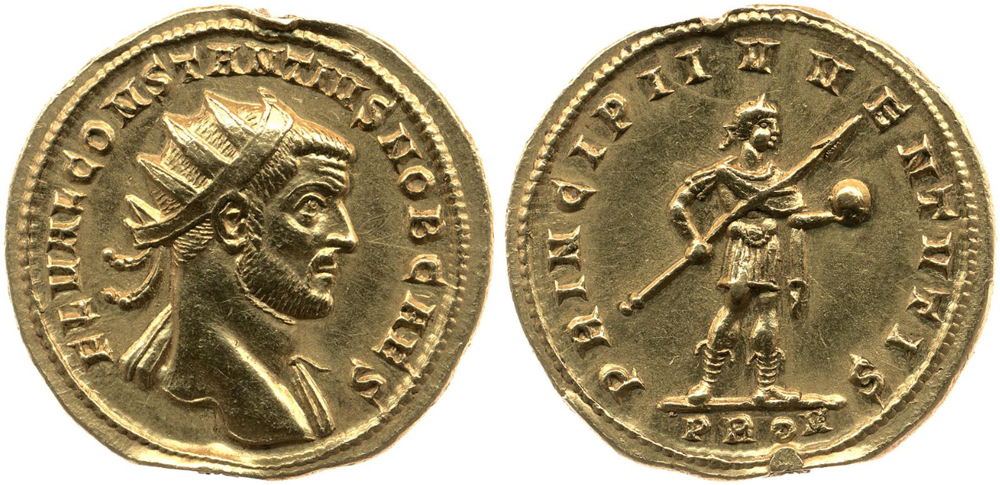
The research of the
specimens that belonged to the numismatic collection of Apostolo
Zeno is partly the subject of my doctoral thesis, and represents
a fascinating evolving path that it can never really says to be
concluded. Nevertheless, every coin found,
and returned, to its collector’s history helps to keep
alive the interest for a collector and
a collection that do not really deserve to be forgotten.
* This article mainly derives from
my doctoral thesis: »La collezione numismatica di
Apostolo Zeno«, a research project in
collaboration between the Universities of Venezia Ca’
Foscari, Udine and Trieste, and in cooperation agreement
with the Westfälische Wilhelms-Universität Münster.
[1]
The
Diary was written by Marco Forcellini (1712–1793), the
personal secretary and friend of Apostolo Zeno, and it
contains some passages of the conversations the two
entertained since 1745. The manuscript is kept in the
Biblioteca Medicea Laurenziana in Florence, Fondo
Ashburnham 1502, and its content were published in 2012
edited by Corrado Viola with the title of »Diario
Zeniano (Firenze, Biblioteca Medicea Laurenziana, Ashb.
1502) Marco Forcellini«.
[2]
Apostolo Zeno (and his numerous interlocutors), in all
documentation examined, refers to ancient coins as
»medals«. This use originated
from the XIV century and in the XVIII
century it was fully accepted. See
Saccocci
2001, 58 and, for further details on
this issue, Missere Fontana 1995 and
Mc Crory
1999.
[3]
»Only once I had sold medals: they were four gold
medallions, which I gave to Albani for 170
zecchini,
and to me they cost 25 ongari« [=
Hungarian ducats]:
Viola 2012, 97. At the
time of Zeno, the ongaro (or
ungaro,
unghero) weighed approximately 3.45 g with a gold
content of 986/1000: cf. Martinori 1915, 354, under the
heading »Ongaro di Cremnitz o di Kremnitz«. This coin
had about the same weight of the
zecchino of
Venice, and in 1745 (the year of this statement), the
doge was Pietro Grimani (1741–1752) and his
zecchini
had a weight between 3,37 g and 3,50 g: cf. CNI
VIII, 451, n° 53–54; Montenegro 2012, 592, n° 2644;
finally, see a coin of Grimani auctioned by the Auction
House Bertolami Fine Art (E-Auction 97, 27–28 March
2021, Lot 1420).
[4]
»The past few days I
bought here another beautiful gold medallion, weighting
four ungheri, with the head of Gallienus on one
side, and on the other Hercules with the club and the
lion skin, and the legend VIRTVS GALLIENI AVGVSTI«:
Lettere Zeno 1785, vol. III, Lett. 601,
382; cf. »Fontes Inediti Numismaticae Antiquae«
(from now on, »FINA«), ref. 6744:
https://fina.oeaw.ac.at/wiki/index.php/Apostolo_Zeno_-_Andrea_Cornaro_-_1723-9-14
[transl. R. Tomassoni].
[5]
Lettere Zeno 1785, vol. III, Lett. 535,
226–227; cf. FINA, ref. 6793:
https://fina.oeaw.ac.at/wiki/index.php/Apostolo_Zeno_-_Pier_Caterino_Zeno_-_1721-1-4;
Viola 2012, 97, suggests that
the Count Lippe could be Rudolf Ferdinand Count of
Lippe-Biesterfeld (1678-1736); Tomassoni
2021, 113–115. The medallion will be described below in
further detail.
[7]
The friendship and the epistolary exchange
between Zeno and Baldini intensified from 1723–1724,
when Apostolo bought the collection of
Roman
imperial silver coins of the Somascan Father.
Baldini’s competence in the
numismatic field is well known and
it is enough to mention
his updated edition of the work of Jean Foy Vaillant
(1632–1706): »Numismata imperatorum Romanorum
praestantiora a Iulio Caesare ad Postumum«, in
three volumes, published in Rome in 1743. For a complete
analysis on these issues I refer to my doctoral thesis,
Tomassoni 2021, in particular to chs. 2
(pp. 27–36), and 6.
[8]
The counterfeiting was an
issue much felt by Zeno and in general by collectors of
his time, see Tomassoni 2021,
ch. 5. The question of false coins and their authors was
already known and discussed in the 16th century, see
Missere Fontana 2013.
[9]
»At the foot of this
(letter) you will find the description of the four
gold medallions that I have: of which, however, I will
never be deprived for less than 160. ungheri. Do
not be surprised by the price, since only for Valens I
could have 70. and I declined, not wanting less than one
hundred«: Lettere Zeno
1785, vol. IV, Lett. 736, 238; cf. FINA,
ref. 6654:
https://fina.oeaw.ac.at/wiki/index.php/Apostolo_Zeno_-_Gian_Francesco_Baldini_-_1728-3-13
[transl. R. Tomassoni].
[10]
Cohen 1888, vol.
VII, 79, n° 227.
[11]
Cf.
RIC IX, 122, n° 25.
The dissertation of Father Sebastiano
Paoli (or Pauli, 1684–1751) was published in 1722 under
the title »De Nummo Aureo Valentis Imp«.
For more information on this kind of medallion, see
Vondrovec 2010.
[12]
Lettere Zeno 1785, vol. IV, Lett. 736,
239–240. The last medallion
mentioned is clearly a double stater of Alexander the
Great, cf.
Price 1991, vol. I, 107, n° 167.
[13]
»All the mentioned
medallions are of pure gold and undoubtedly antique, and
well-preserved. In Gallienus’ one
there is a hole over the head; and
this is the only defect« [transl. R. Tomassoni].
[14]
Le Grelle 1965, p.
XVIII.
[15]
Indeed, Venuti reached a remarkable reputation thanks to
the editions of the numismatic catalogues of Albani’s,
Mattei’s and Odescalchi’s collections. In 1734 he also
became auditor in Rome of cardinal Albani and the
curator of his antiquarian collection. In 1744 Pope
Benedict XIV (1740–1758) appointed Venuti as apostolic
antiquary and apostolic commissioner over all
›archaeological excavations‹: see Cristofani 1983, 49.
[16]
Venuti 1739,
vol. I, 1 and pl. 1. Following
the text: »Ex Auro. Pond. Den. XIV. Gr. IX.«:
the weight is therefore 14 deniers and 9 grains. If we
consider that 1 ounce = 24 deniers, 1 denier = 24
grains, and 1 grain = 0,0486 g (the weight equivalence
in the city of Rome, see Martinori
1915, 191), we will have the following equation:
[(14 x 24) + 9] = 345 grains x 0,0486 g = 16,767 g.
[17]
Venuti 1739, vol. II, 47
and pl. 83. The weight is 11
deniers and 22 grains: it means 13.91 g (see above).
[18] The
engravings of the medallions were made by the painter
Gaetano Piccini: see Le Grelle 1965, p. XVIII, note 10.
[19]
Venuti 1739, vol.
II, 103 and pl. 111. The weight is 10 deniers and 20
grains: it means 13.8 g (see note 16).
[20]
Venuti 1739, vol. II,
109 and pl. 114. The weight is 1 ounce, 7 deniers and 2
grains: it means 36.25 g (see note 16).
[21]
Gnecchi 1905,
16 and following. See also Gnecchi
1912, vol. I, 36 (about Valens’ medallion).
The treaty of Tolentino was signed on 19 February 1797
between the French of Napoleon Bonaparte, who had
occupied the papal territories of central Italy, and the
diplomates of Pope Pius VI (1775–1799). In particular,
the articles 10 and 12 of the treaty obliged the Pope to
pay to the French army a compensation of 30 million of
lire tornesi (tornesel or tornese), in cash,
diamonds and other precious objects.
To deepen this topic, see Filippone
1959.
[22]
In this entry there were no
references to Apostolo Zeno or cardinal Albani; these
were recently added following the hypothesis of this
article, formulated previously in my doctoral thesis.
[23]
Cohen 1860, 353, n° 22.
[24]
Madden 1868, 13 and pl. IV, n° 5.
[25]
»(F)ormerly Blacas, anciently
Vatican, mm 28, 14.000 g«:
Gnecchi 1912, vol. I, 7–8, n° 16.
[26]
»London (formerly Blacas
Vat. Alb.) mm. 25, 12.975 g«:
Gnecchi 1912, 13, n° 3.
[27]
Also this specimen is
described in the first edition of the work of Henry
Cohen (see above), in the fifth volume, as belonging to
the collection of the Duke of Blacas: Cohen
1861, 553, n° 6; the medallion is reported as
well in the already mentioned publication of Madden
1868, 28, n° 300 and pl. V, n° 10.